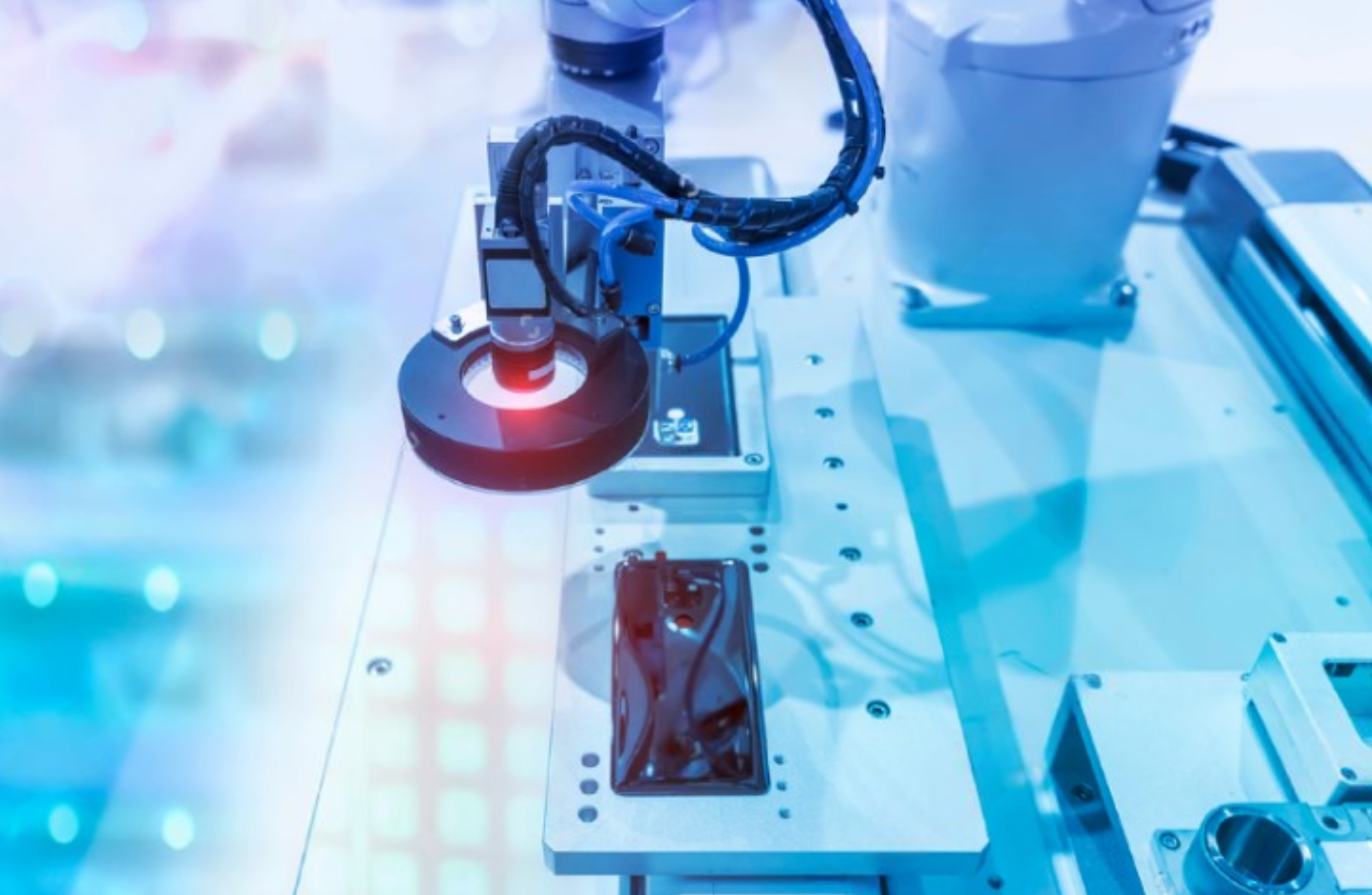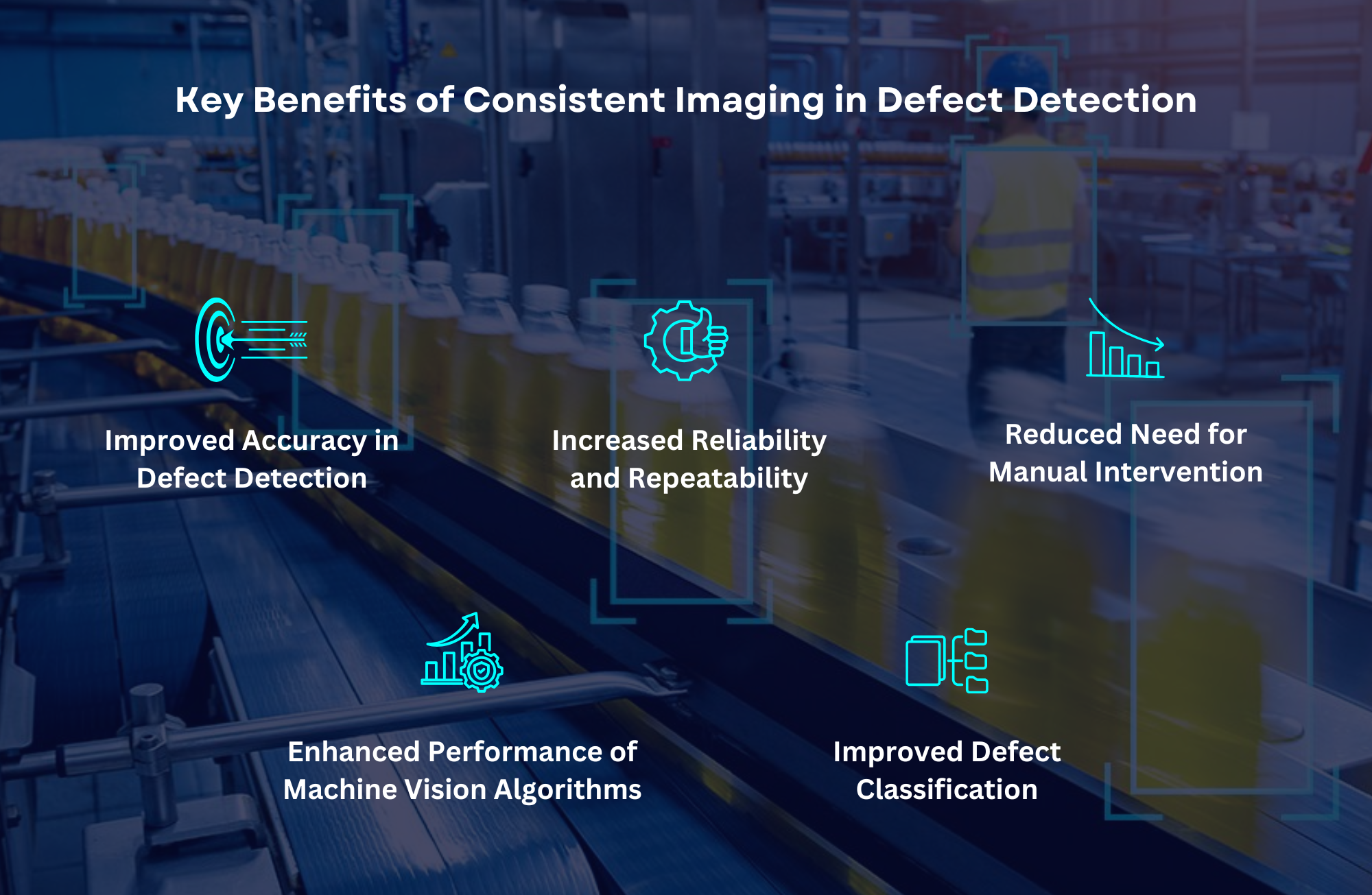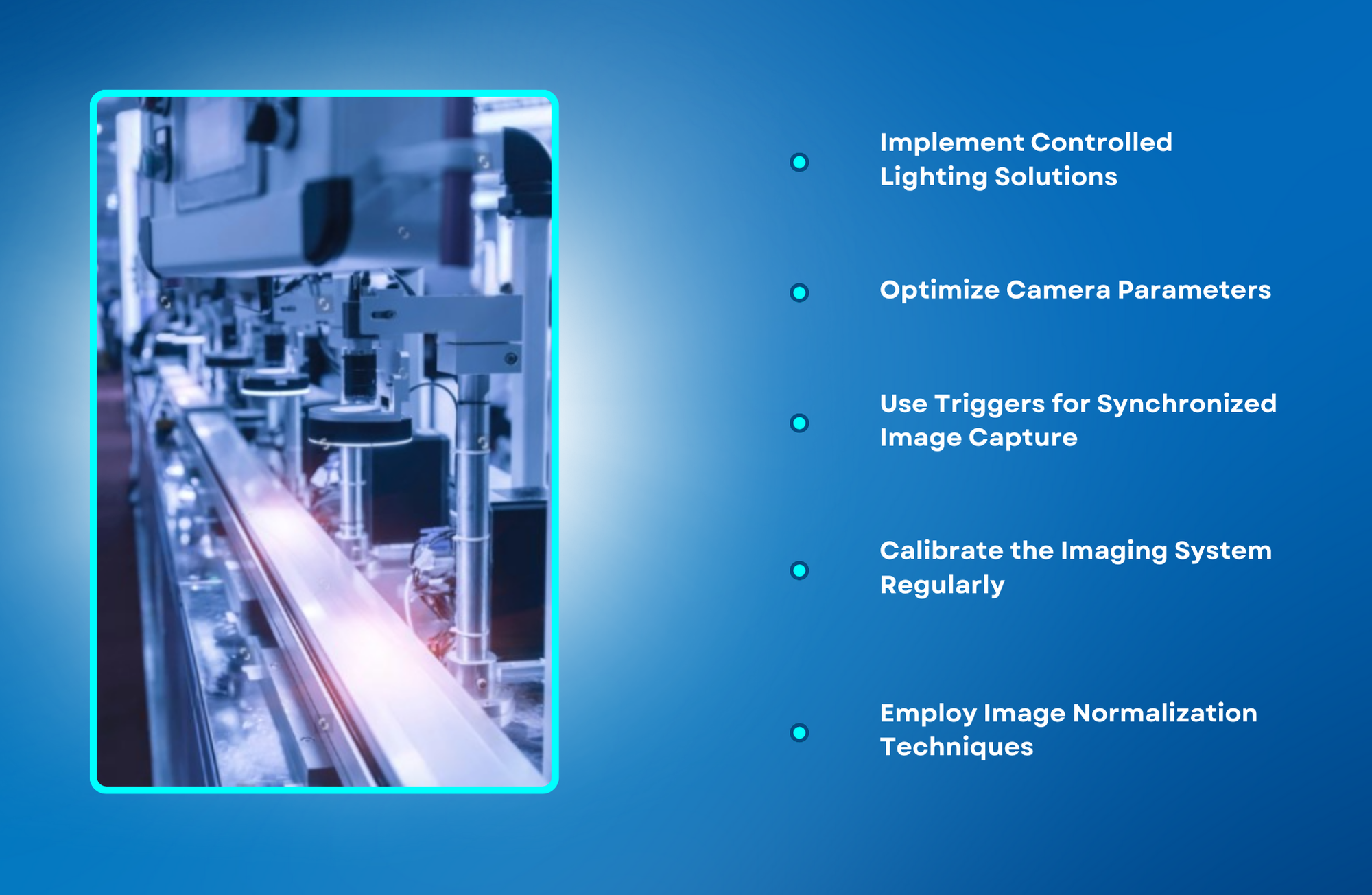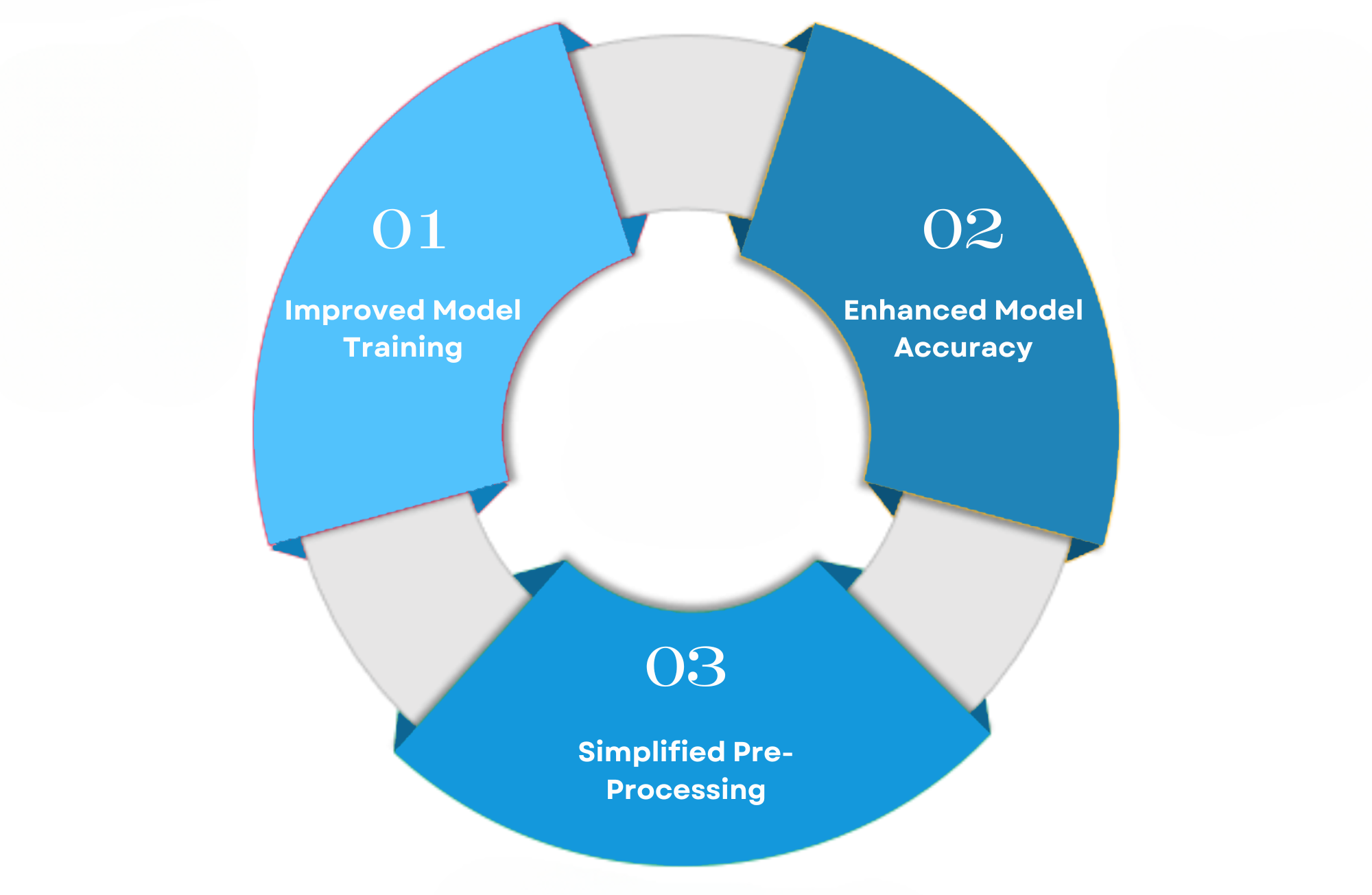Why Consistent Imaging is Important for Defect Detection
Published on: Nov 11, 2024

Written by: Soumen das
Why Consistent Imaging is Important for Defect Detection and Inspection Automation
In inspection automation, imaging systems capture detailed visual data of products moving through production lines. These images are analyzed by algorithms to detect defects such as scratches, discolorations, or misalignments. Consistency in imaging is crucial because it ensures that inspection results are accurate, repeatable, and reliable, regardless of environmental changes or variations in product appearance.

Key Benefits of Consistent Imaging in Defect Detection
Improved Accuracy in Defect Detection:
Consistent imaging minimizes false positives and false negatives in defect detection. When images are captured with uniform lighting, focus, and exposure, the system can distinguish actual defects from noise, reflections, or background variations, leading to more accurate inspection outcomes.
Increased Reliability and Repeatability:
Inspection automation systems rely on stable, repeatable data to make consistent quality assessments. Consistent imaging ensures that the same defect will be detected every time, providing manufacturers with dependable data and reducing variability in the inspection process.
Reduced Need for Manual Intervention:
When imaging is consistent, the chances of error or missed defects decrease significantly. This reduces the need for manual inspection or re-inspection, freeing up resources and allowing the automated system to handle quality control independently.
Enhanced Performance of Machine Vision Algorithms:
Machine vision and AI algorithms used for defect detection are sensitive to image quality. Consistent imaging provides these algorithms with uniform data, allowing them to perform optimally. Without consistency, algorithms may require additional training and calibration, complicating and slowing down the inspection process.
Improved Defect Classification:
Defect classification—determining the type, severity, and location of a defect—is more accurate with consistent imaging. With a stable imaging environment, systems can better classify defects based on size, color, and shape, which is critical for automated sorting and decision-making.

Factors Influencing Imaging Consistency
Lighting Conditions:
Inconsistent lighting is one of the main causes of variability in imaging. Sudden changes in lighting intensity, direction, or color can alter the appearance of a defect or product, affecting the system’s ability to detect defects accurately. Proper lighting setup and controlled illumination are essential to maintain consistent image quality.
Camera Settings:
Variations in camera settings, such as exposure, focus, and shutter speed, can lead to inconsistent imaging results. These settings should be fixed and optimized to suit the inspection environment and product type, ensuring stable image quality across all inspections.
Environmental Conditions:
Environmental changes, such as temperature, humidity, or vibrations in the production environment, can impact imaging consistency. Vibration-resistant mounts, enclosures, and controlled environmental conditions help in maintaining imaging stability.
Product Positioning:
Inconsistent positioning of products on the conveyor or inspection line can lead to image distortion or misalignment. Automated inspection systems should use consistent positioning mechanisms, such as guided conveyor systems, to ensure each product is imaged in the same position and orientation.
Lens Quality and Cleanliness:
Lenses can accumulate dust or residue over time, which can degrade image quality and reduce inspection accuracy. Regular cleaning and maintenance of lenses are essential to preserve consistent image quality.
Techniques for Achieving Consistent Imaging in Inspection Automation
Implement Controlled Lighting Solutions:
Using stable, uniform lighting, such as LED or backlighting, eliminates shadows and minimizes reflections, producing consistent images that are ideal for inspection. Diffused lighting helps to evenly illuminate surfaces, making it easier to detect surface-level defects like scratches and cracks.
Optimize Camera Parameters:
Set camera parameters, such as exposure, gain, and white balance, to fixed values. For high-speed inspections, consider using cameras with global shutters to avoid motion blur, ensuring crisp, detailed images every time.
Use Triggers for Synchronized Image Capture:
Use sensors or triggers to capture images precisely when a product reaches a specific point. Triggered imaging minimizes the effects of motion or misalignment, allowing for consistent and focused images. This is particularly useful for high-speed production lines where timing is critical.
Calibrate the Imaging System Regularly:
Calibration helps align the imaging system to the product’s dimensions and requirements. Regular calibration corrects any slight changes due to wear and tear or environmental shifts, ensuring that each image is captured from a consistent perspective.
Employ Image Normalization Techniques:
Image normalization, such as adjusting brightness and contrast levels, can help reduce variability in captured images. Some systems use adaptive algorithms that standardize image attributes, making each image comparable regardless of small fluctuations in conditions.

Challenges in Maintaining Consistent Imaging and How to Overcome Them
Changing Ambient Light:
In environments where ambient light changes frequently, such as near windows or in open areas, imaging can be inconsistent. This can be countered by isolating the imaging area with enclosures or using infrared (IR) or UV lighting, which is less affected by visible light fluctuations.
Vibrations from Nearby Machinery:
Vibrations from surrounding machinery can misalign cameras or shake the imaging setup, causing blurry or distorted images. Anti-vibration mounts and sturdy enclosures help reduce this effect, maintaining sharp images even in challenging environments.
Variability in Product Surface or Material:
Some products have surfaces that vary in reflectivity or texture, which can lead to inconsistent imaging. Polarized lenses or diffused lighting can help minimize reflections, ensuring that each product is imaged uniformly regardless of surface variations.
Role of Consistent Imaging in Machine Vision and AI Models
Machine vision and AI models trained for defect detection depend heavily on image consistency. Here’s how consistent imaging enhances their performance:
Improved Model Training:
When images used for training are consistent, the model learns to recognize defects without distraction from noise or artifacts. Consistency during training helps AI models generalize better, detecting defects across a broader range of real-world scenarios.
Enhanced Model Accuracy:
Models perform more accurately when fed with consistent images. Any fluctuation in image quality could confuse the model, potentially leading to false positives (detecting defects where there are none) or false negatives (missing actual defects).
Simplified Pre-Processing:
Consistent images require less pre-processing, such as normalization or noise reduction, which speeds up the overall inspection process. Simplifying pre-processing also allows for more straightforward integration with real-time inspection systems, as image consistency reduces the need for additional image adjustments.

Consistent imaging is a cornerstone of effective defect detection and inspection automation. It enhances accuracy, reliability, and repeatability in quality control, allowing for precise defect identification and reducing the need for manual intervention. By focusing on consistent lighting, optimized camera settings, synchronized image capture, and regular calibration, manufacturers can ensure stable image quality that supports efficient inspection.
Achieving consistent imaging requires attention to detail in the design and maintenance of the inspection environment, but the benefits—reduced waste, enhanced productivity, and reliable quality assurance—make it a critical investment for any automated inspection system.

